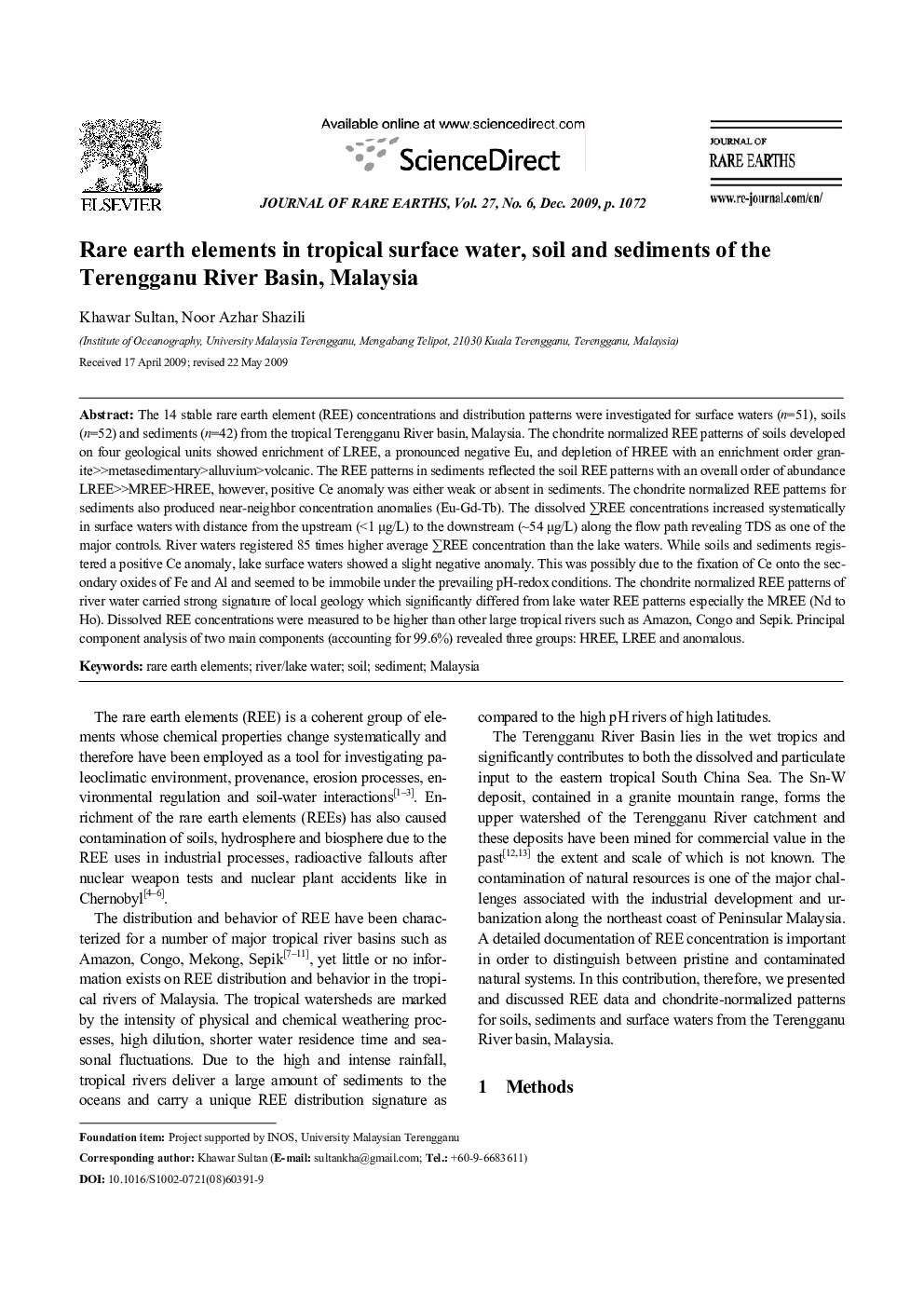| Article ID | Journal | Published Year | Pages | File Type |
|---|---|---|---|---|
| 1261911 | Journal of Rare Earths | 2009 | 7 Pages |
The 14 stable rare earth element (REE) concentrations and distribution patterns were investigated for surface waters (n=51), soils (n=52) and sediments (n=42) from the tropical Terengganu River basin, Malaysia. The chondrite normalized REE patterns of soils developed on four geological units showed enrichment of LREE, a pronounced negative Eu, and depletion of HREE with an enrichment order granite>>metasedimentary>alluvium>volcanic. The REE patterns in sediments reflected the soil REE patterns with an overall order of abundance LREE>>MREE>HREE, however, positive Ce anomaly was either weak or absent in sediments. The chondrite normalized REE patterns for sediments also produced near-neighbor concentration anomalies (Eu-Gd-Tb). The dissolved ∑REE concentrations increased systematically in surface waters with distance from the upstream (<1 μg/L) to the downstream (∼54 μg/L) along the flow path revealing TDS as one of the major controls. River waters registered 85 times higher average ∑REE concentration than the lake waters. While soils and sediments registered a positive Ce anomaly, lake surface waters showed a slight negative anomaly. This was possibly due to the fixation of Ce onto the secondary oxides of Fe and Al and seemed to be immobile under the prevailing pH-redox conditions. The chondrite normalized REE patterns of river water carried strong signature of local geology which significantly differed from lake water REE patterns especially the MREE (Nd to Ho). Dissolved REE concentrations were measured to be higher than other large tropical rivers such as Amazon, Congo and Sepik. Principal component analysis of two main components (accounting for 99.6%) revealed three groups: HREE, LREE and anomalous.
